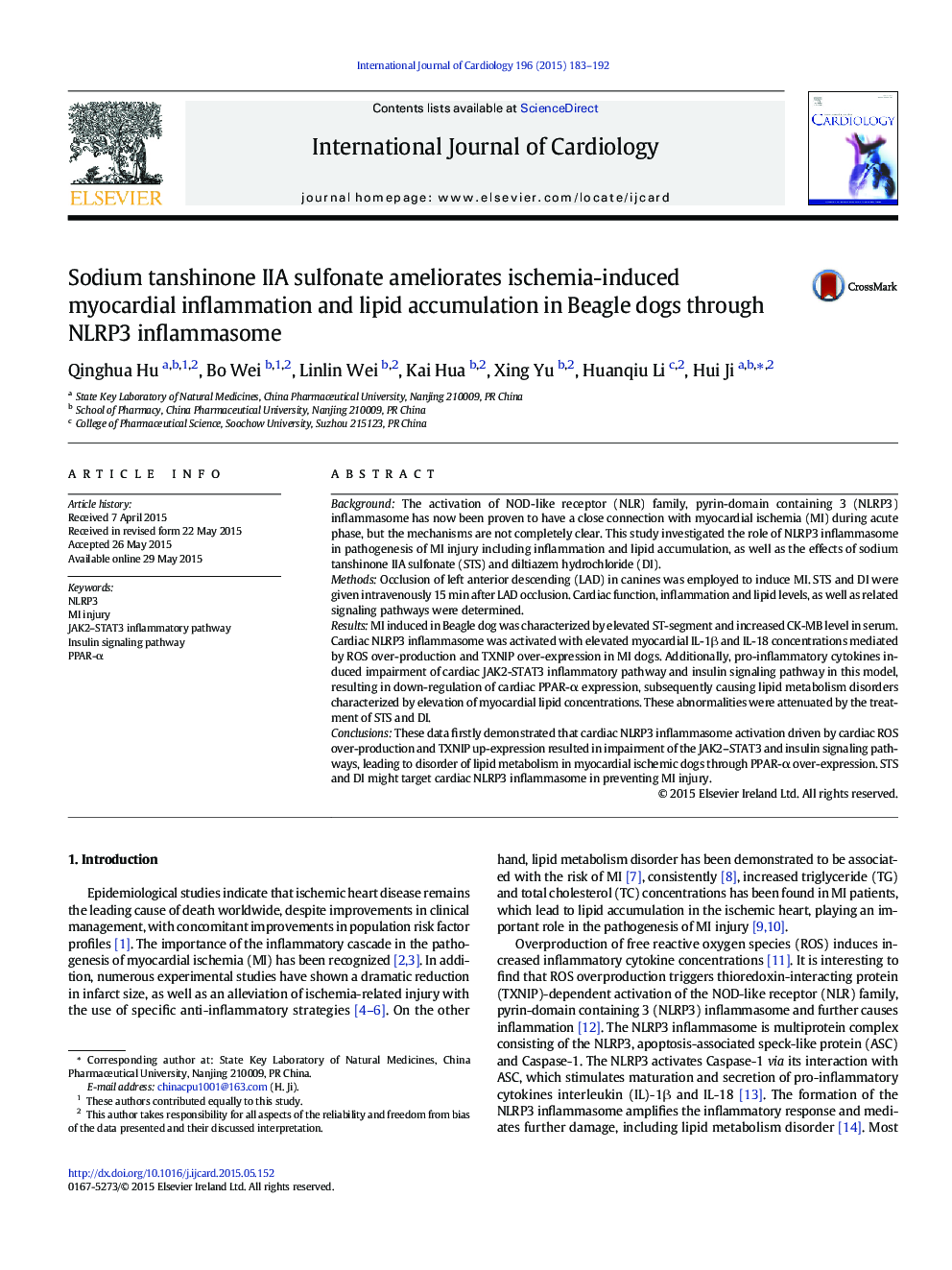| Article ID | Journal | Published Year | Pages | File Type |
|---|---|---|---|---|
| 5966056 | International Journal of Cardiology | 2015 | 10 Pages |
BackgroundThe activation of NOD-like receptor (NLR) family, pyrin-domain containing 3 (NLRP3) inflammasome has now been proven to have a close connection with myocardial ischemia (MI) during acute phase, but the mechanisms are not completely clear. This study investigated the role of NLRP3 inflammasome in pathogenesis of MI injury including inflammation and lipid accumulation, as well as the effects of sodium tanshinone IIA sulfonate (STS) and diltiazem hydrochloride (DI).MethodsOcclusion of left anterior descending (LAD) in canines was employed to induce MI. STS and DI were given intravenously 15 min after LAD occlusion. Cardiac function, inflammation and lipid levels, as well as related signaling pathways were determined.ResultsMI induced in Beagle dog was characterized by elevated ST-segment and increased CK-MB level in serum. Cardiac NLRP3 inflammasome was activated with elevated myocardial IL-1β and IL-18 concentrations mediated by ROS over-production and TXNIP over-expression in MI dogs. Additionally, pro-inflammatory cytokines induced impairment of cardiac JAK2-STAT3 inflammatory pathway and insulin signaling pathway in this model, resulting in down-regulation of cardiac PPAR-α expression, subsequently causing lipid metabolism disorders characterized by elevation of myocardial lipid concentrations. These abnormalities were attenuated by the treatment of STS and DI.ConclusionsThese data firstly demonstrated that cardiac NLRP3 inflammasome activation driven by cardiac ROS over-production and TXNIP up-expression resulted in impairment of the JAK2-STAT3 and insulin signaling pathways, leading to disorder of lipid metabolism in myocardial ischemic dogs through PPAR-α over-expression. STS and DI might target cardiac NLRP3 inflammasome in preventing MI injury.
Graphical abstractDownload high-res image (186KB)Download full-size image
